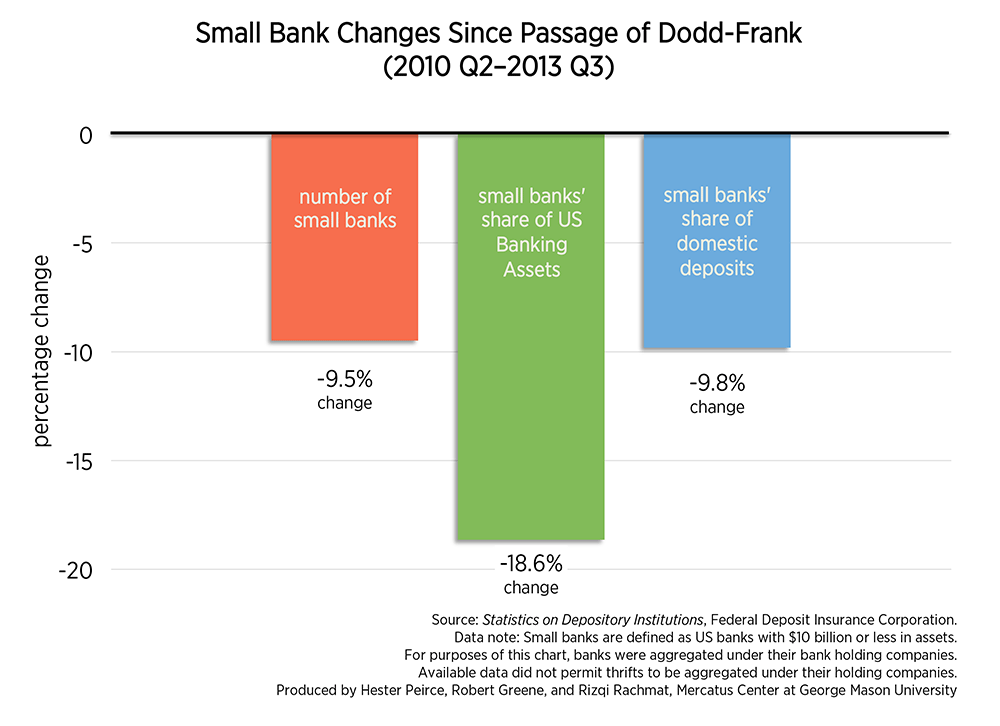By Veronique de Rugy
My colleagues Hester Peirce and Robert Greene have put together a series of charts showing the recent concentration of the U.S. banking system — small banks are disappearing and large banks are growing in number. Here is one of their charts that shows the changes:
Small banks are defined as institutions with $10 billion or less in assets. Some data:

This, of course, has consequences: If banks are driven out of business by regulation, customers will have fewer options.
The whole thing is here with many more charts and a long analysis of the trend.
Small banks are defined as institutions with $10 billion or less in assets. Some data:
Since the financial crisis, US banking assets and deposits have continued to consolidate in a handful of large banks. As the charts show, the five largest banks by assets now hold 44.0 percent of US banking assets and 40.1 percent of domestic deposits—up from 23.5 percent and 19.5 percent, respectively, in early 2000. Correspondingly, small banks’ share of domestic deposits has fallen from 40.4 percent to 23.0 percent since early 2000, and their share of US banking assets has declined from 35.8 to 19.5 percent.The number of small banks has dropped dramatically over the years. This concentration isn’t a bad thing in and of itself — some of the drop in the number of small banks reflects market-driven consolidation. However, consolidation is bad when it’s driven by regulatory burdens that make it hard and expensive for small banks to survive. Repeated waves of bank regulation — most recently Dodd-Frank — can be particularly burdensome for small banks. Peirce and Green explain:
Regulatory compliance can be a particular challenge for small banks with limited compliance expertise. Regulatory expenses absorb a larger percentage of small banks’ budgets than of their larger counterparts’ budgets. Although correlation is not evidence of causation, as financial regulation has increased since 2000, so has banking concentration. The Dodd-Frank Act, passed in 2010, imposes a new set of regulations that are disproportionately burdensome to small banks. Moreover, by designating the largest financial institutions as “systemically important,” Dodd-Frank creates a market expectation that designated firms are too big to fail and generates funding and other competitive advantages for the largest US banks.Here’s what’s happened to small banks since Dodd-Frank:
Since the second quarter of 2010—immediately before the July passage of Dodd-Frank—to the third quarter of 2013, the United States lost 650, or 9.5 percent, of its small banks. Small banks’ share of US banking assets and domestic deposits has decreased 18.6 percent and 9.8 percent, respectively, and the five largest US banks appear to have absorbed much of this market share. Mounting regulatory costs threaten to accelerate the shift towards big banks and away from small banks that have long been important members of the financial industry and the local communities they serve.

This, of course, has consequences: If banks are driven out of business by regulation, customers will have fewer options.
The whole thing is here with many more charts and a long analysis of the trend.





No comments:
Post a Comment